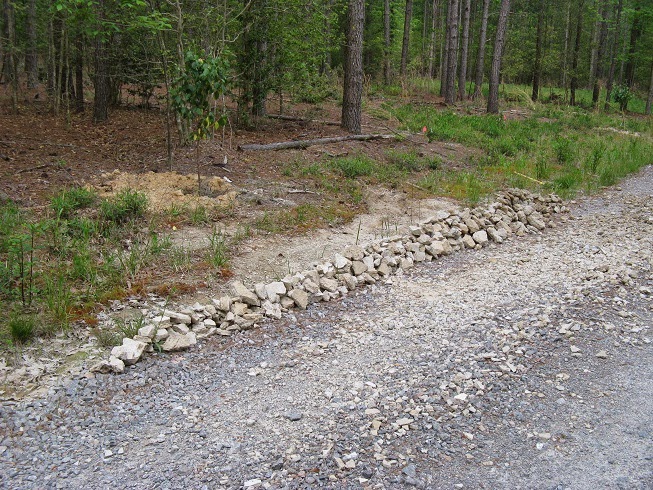This bed reminds me of boring, corporate plantings that one sees in grocery store parking lots, but at least it's all native and is meant to be low maintenance. See, I wasn't planning to have a bed here at all. When we someday have the funds to build a garage, this patch will be run over in the construction process. However, in the meantime we had problems with erosion because a gutter was overflowing here. My husband requested bushes to help retain the soil.
 |
| Heuchera, heucherella, and inkberry hollies. |
I didn't want to mess with anything complicated, so I did some research and settled on the Shamrock cultivar of inkberry holly (
Ilex glabra). Inkberry is a native holly. The female plants make black colored berries in the fall. Shamrock is a smaller cultivar, growing up to 4 feet tall, which I thought worked better with the size of my porch than the species would. You can read more about it
here.
 |
| Heucheras, inkberry hollies, and lyreleaf sage. |
This was fine until my husband hit the new inkberries with the edger. Then he requested mulch to delineate this area as a bed so he wouldn't kill the bushes. Someday the bushes will grow to fill the bed, or, as I mentioned, the whole thing will be leveled by construction. However, it looked too empty for now. This was at the peak of summer heat, but I added some heucheras and a heucherella (a
Heuchera/
Tiarella hybrid--these and heucheras are trendy lately and easy to find in stores). I also transplanted in some lyreleaf sage plants from the front bed, aka the lyreleaf sage nursery. As you can see, I also did a border of concrete chunks.
The whole thing will be easy to maintain and easy to get rid of. I'll need to deadhead the lyreleaf sage plants when they flower so the bed isn't overrun, and I'll pull weeds occasionally. When we no longer need the bed, the heucheras will probably transplant readily. I assume this because they're supposed to need dividing every few years anyhow. I don't mind losing the lyreleaf sages because I can easily grow a million more. I might lose the inkberries, but that will be it.
Yes, it's boring. I suppose it demonstrates that one can do any landscaping style with native plants, including boring corporate plantings. (Please keep in mind that this was an unplanned project that I had to do concurrently with building the rain garden, something that I did put a lot of time and design effort into.)




